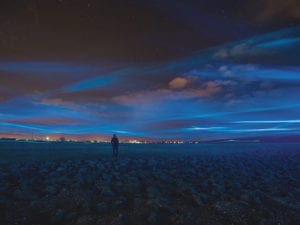Mahmoud Bakhshi investigates the infamous Cinema Rex fire in Abadan, South Iran, as the focus of a new installation at Narrative Projects, London. The event, which saw a theatre set ablaze and consequently killing over 400 people in August of 1978, is considered to have been the catalyst of the 1979 Iranian revolution. In Unity of Time and Place also refers to the coup d’état, which occurred on the same day 17 years earlier, drawing parallels between the events and their crucial impact on the transformation of history.
Bakhshi replicates the interior design of the cinema, using vintage furniture and carpets to adorn the gallery’s walls and floors; these intricately composed sets are accompanied by emotive films that evoke a connection with the time and place of the incident. It is also in these environments that the viewer is invited to reflect on the pivotal moment in history. The use of real stories and archival footage is not a new tool for the artist, who often uses past material as a lens through which to examine the present.
Alongside this continued interest in history, the project also feeds into a wider creative inquiry into the role and impact of practitioners in contemporary society. With this framework in mind, the 1978 fire takes on additional layers of meaning. Having begun during a screening of The Deers (1974) by Masoud Kiamia, a controversial piece that highlighted a deep social divide in the modern culture that calls for violence and force to be used against the government, the film remains one of the most iconic pieces of Iranian cinema, and in light of these events, holds a larger conceptual grounding. This continued legacy is demonstrated by Bakshi’s interview with the director displayed as part of the exhibition.
In Unity of Time and Place, Narrative Projects, London, until 11 March. www.narrativeprojects.com
Credits
1. Mahmoud Bakhshi, Tulips Rise from the Blood of the Nation Youth (2008). Courtesy of the artist and Narrative Projects, London.





